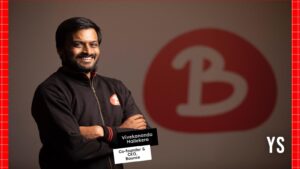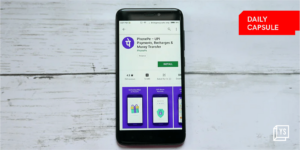Co-founder and CTO Manisha Raisinghani is one among very few women techies who are working at the intersection of business, logistics, and leadership. A new-age entrepreneur, she believes that with curiosity, strong analytical skills, and the right attitude, anyone can learn anything in a very short time.
“I never had patience when it comes to learning new things. I wanted to learn quickly and then get to the application,” she tells YourStory.
Today, she has already established a growth-stage logistics-tech company with a $100 million valuation. Backed by investors such as Steadview Capital, Tiger Global Management, Singapore Angel Network, Paytm, Alibaba among others, LogiNext has raised $50 million in funding so far.
Being a CTO, she heads the product department at LogiNext Solutions with a tech team of 80-100 people.
“My father was a first-time entrepreneur who faced his share of struggles. I was expected to continue the legacy. But I chose a different path. A lot of the credit here goes to my father who gave me and my sister an opportunity to explore and find our own paths,” she adds.
Reminiscing the early days
Manisha spent her childhood in Ulhasnagar, a city on the outskirts of Mumbai, which falls under the Thane district.
In her school, she was a backbencher yet a geek. “Teachers always used to wonder where they should put me — amid the naughty sections or the bright ones,” she chuckles.
But she had a flair for mathematics, which honed her analytical skills at an early stage, and had an interest in the practical application of the subjects. “I used to teach maths to even my older cousins. This interest later pushed me towards engineering,” she notes.
“However, I was never a computer or coding geek. So I went with the trend and chose Electronics and Telecommunications,” she adds.
The turning point
Usually, for techies, engineering is about doing projects, internships, and starting up in college. However, for Manisha, it was more about the fun.
“I secured good marks and got a college of my choice. Then, I had so many groups — school group, train group, engineering group — those were fun days,” she recalls.
Being an E&C student, Manisha got her first placement opportunity in a Tata company. “But it was a field job in a village near Solapur. I never wanted to leave Mumbai, so I moved past it,” she says.
Later, she joined Mastek, a global listed digital transformation company, where her interest in programming languages bloomed.
“I never looked back after that. I joined a startup, rose there from a software engineer to system architect role in two years, went to Carnegie Mellon University (CMU) for my masters and found my way towards entrepreneurship,” she adds.
Grooming interests at CMU
Manisha found the atmosphere at Carnegie Mellon University (CMU) in the US to be entirely different and noted that the academics had a more practical approach.
It was there that she met her co-founder Dhruvil Sanghvi, with whom she worked as part of a Deloitte case study project.
“Dhruvil was organised, structured about the meetings, was interested in how the meetings should go, and kept motivating people. He still has those qualities,” she added.
Manisha later worked as a consultant at Warner Bros during her masters, where she got fascinated with databases. “Data makes me curious and analytics excites me,“ she quips.
At CMU, Manisha got a placement with IBM Watson – an open, multi-cloud platform that lets clients automate the AI lifecycle.
Building LogiNext
During her stint at IBM, Manisha came across a project from GE Transportation, wherein she had to find insights across thousands of fleets on how to increase the efficiency of vehicles saving fuel, and so on.
“Incidentally, Dhruvil was also working with logistics clients in Chicago. We realised that these guys were spending millions of dollars to build a custom software, which was not something everyone could use. That formed the genesis for LogiNext,” she adds.
They came back to India in 2014 and within two months, launched the first LogiNext product. They haven’t looked back since.
Talking about her learning curve, Manisha shares that while scaling LogiNext, they did a few right things.
First, they built separate products to address specific concerns, and did not hop on making a single product that could do everything. Second, they kept technology at a minimum.
“When required, we moved from a product or process to a platform approach. We implemented microservices architecture which removes our dependence on one programming language. Now, we can use two or more languages easily. But we also take care that we do not make our systems tech-heavy to avoid complexity at all levels – whether in operation or hiring,” she adds.
Key learnings
With eight years of industry experience and more than six years of experience as an entrepreneur and CTO of a logistics company, Manisha shares six key learnings for the techies and CTOs of today.
Don’t solve for billions: Manisha says that if we try to solve for billions right from Day 1, then there are chances to miss the market for millions. Quality is the most important asset and it always comes at the cost of time. What needs to be done in three months cannot be done in a month, just by increasing the number of people working on that project.
“But then, do not miss the market timing in lieu of doing the perfect thing. Finding that balance is the key,” she adds.
Accept your mistakes early: She says there will always be mistakes – right from choosing a technology to hiring a techie. But it’s better to accept it, take immediate action, and be out of it.
Have the right attitude: One thing Manisha looks for while hiring techies is the right attitude.
“Attitude beats aptitude. But skills are definitely important. Also, we give more focus on skills rather than the domain,” she reveals.
Understand your user: With users becoming centric to technology, engineers nowadays are not just expected to code but to empathise with their users to build the right code. It is easier in B2C businesses but in B2B, a techie is seldom the end consumer and hence, Manisha says a more emphasised approach is needed towards understanding the user.
Take risks: One should not be a control freak when it comes to timelines and requirements. Take risks. Try do things in different ways, even if it means putting in some extra time and resources.
“You need product managers. But if developers start thinking like product managers just 10 percent of the time, it can be super helpful for their professional growth and for the product as well,” she adds.
Keep the foundation strong: With the introduction of new technologies on what seems like daily basis, techies may sense a fear of missing out (FOMO).
“But one should keep their focus on learning one or two fundamental languages. Once you master them, you can go ahead to learn new things and become a jack of all trades,” she concludes.










